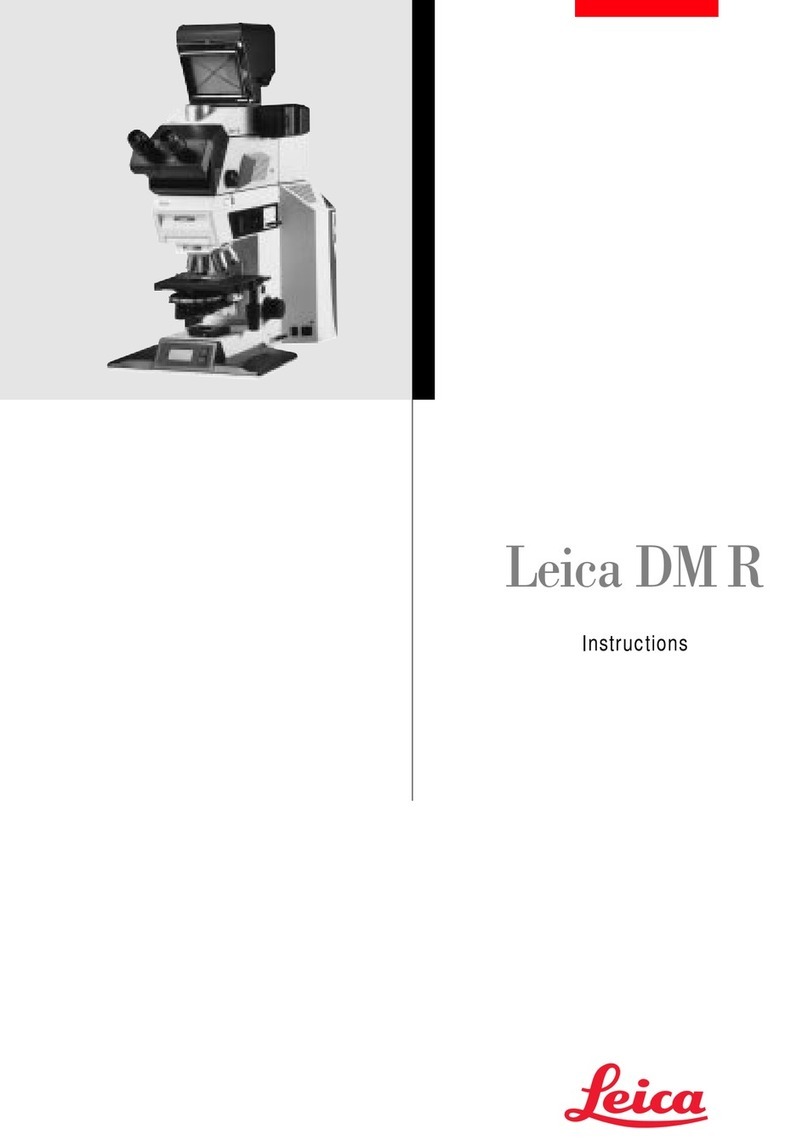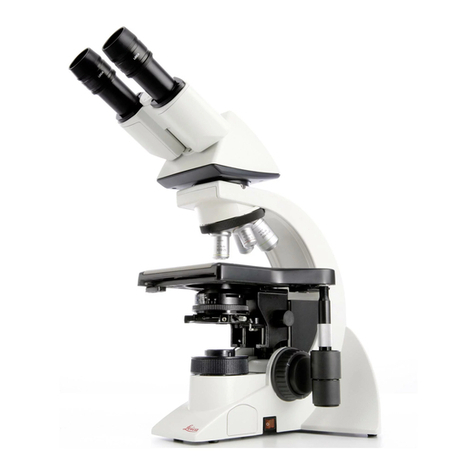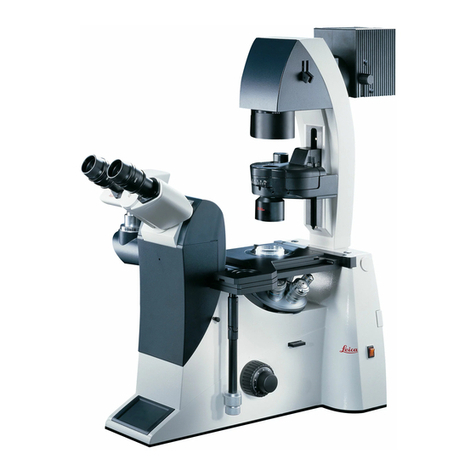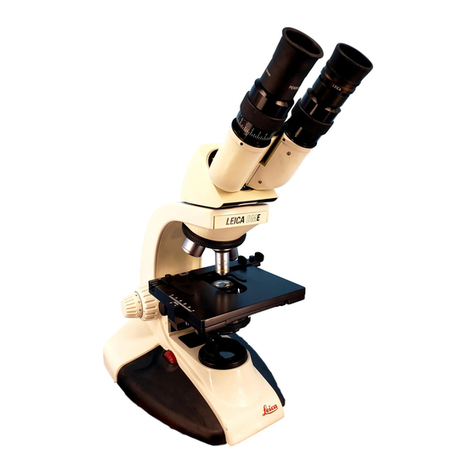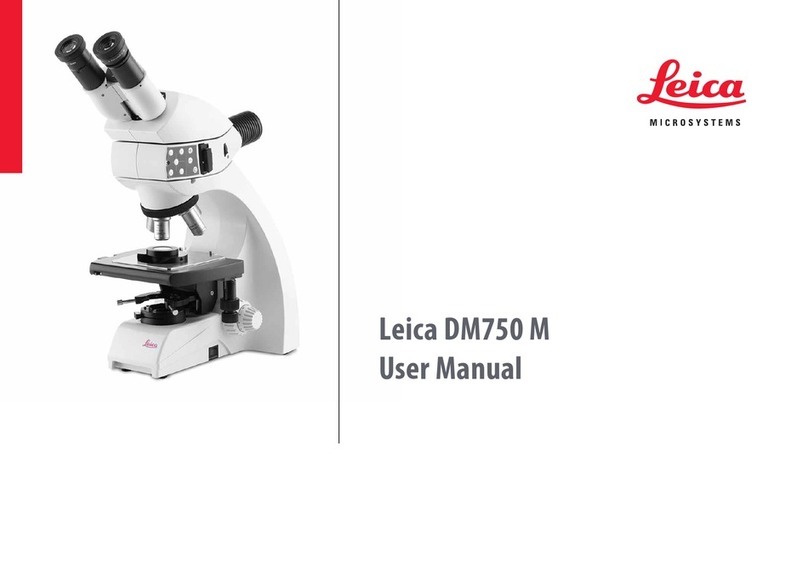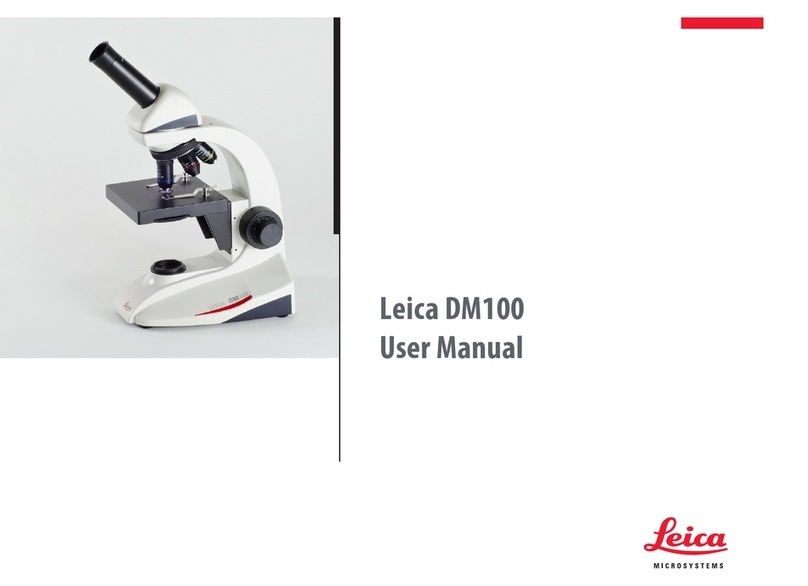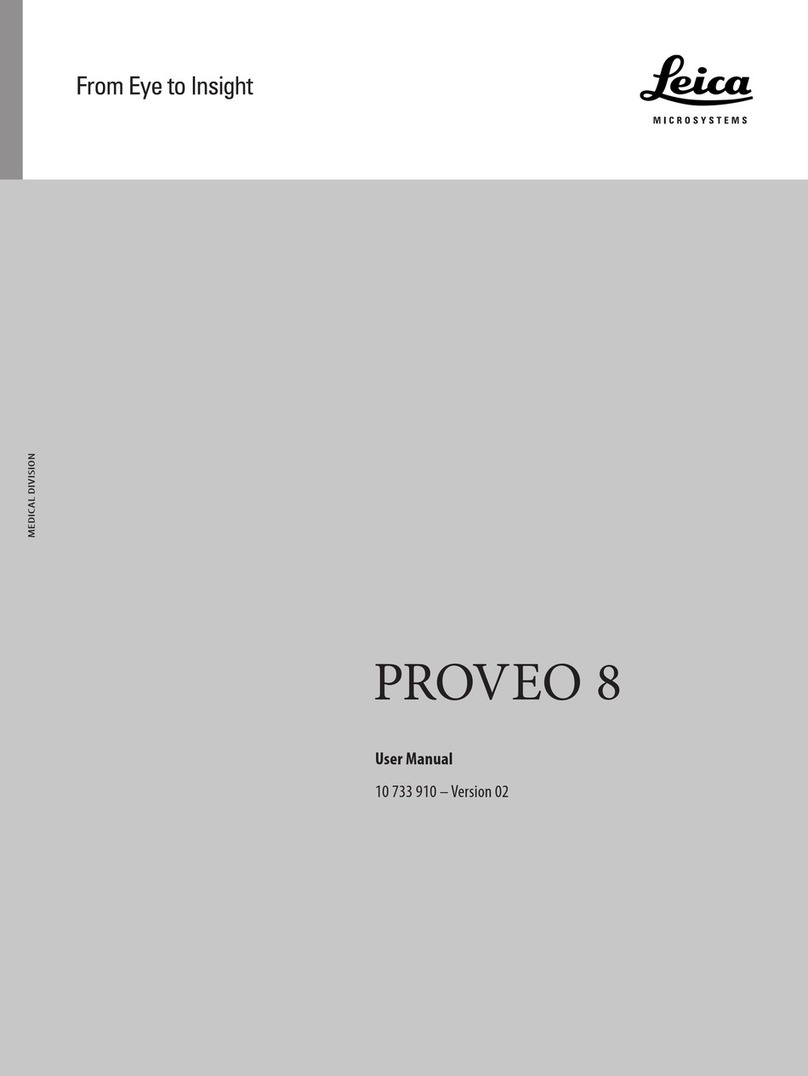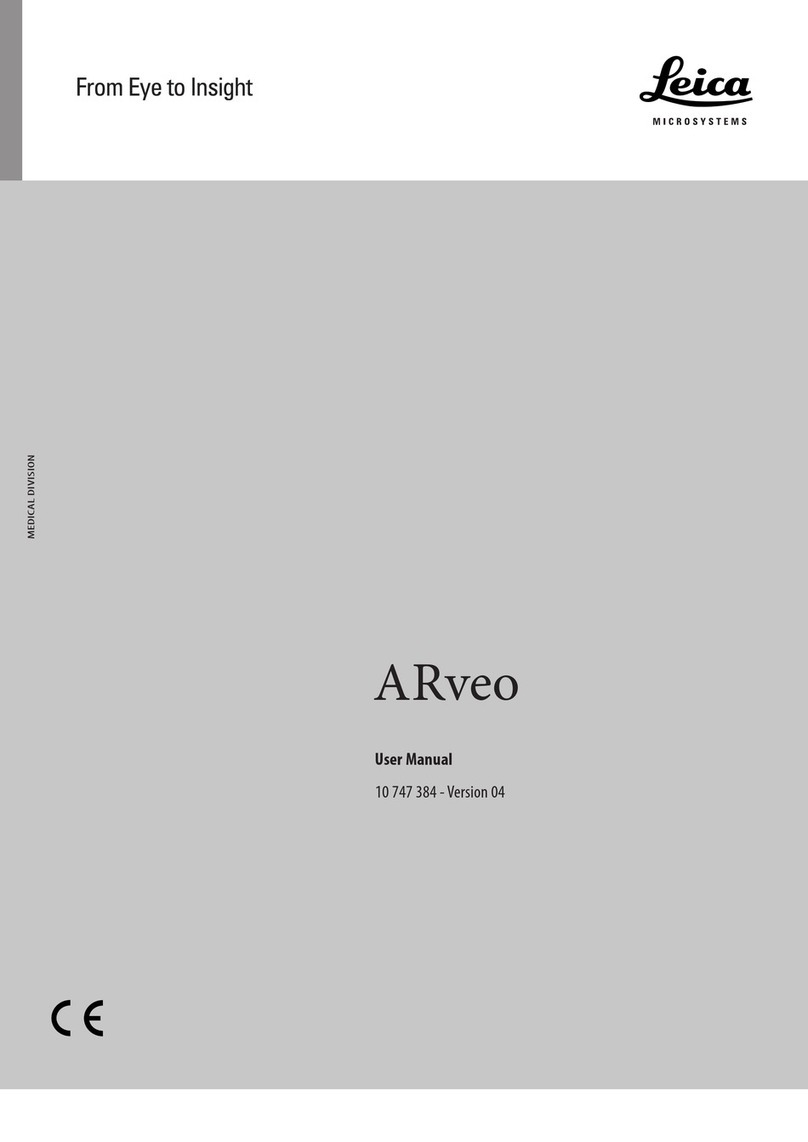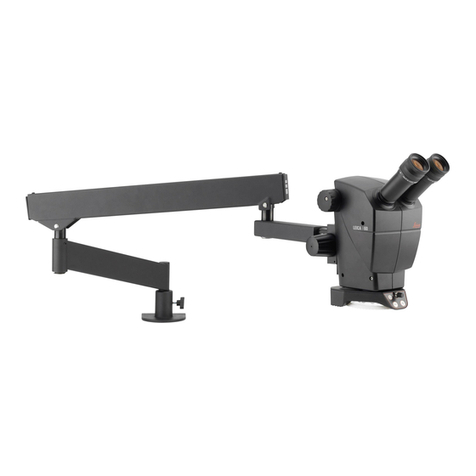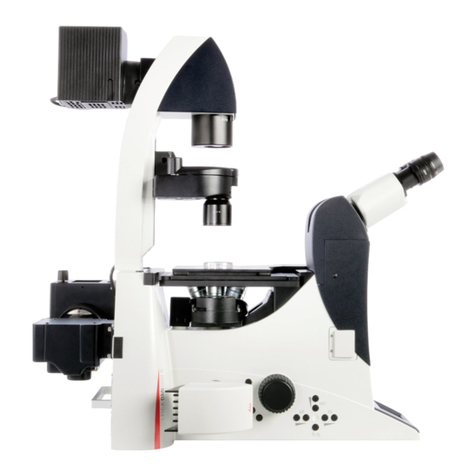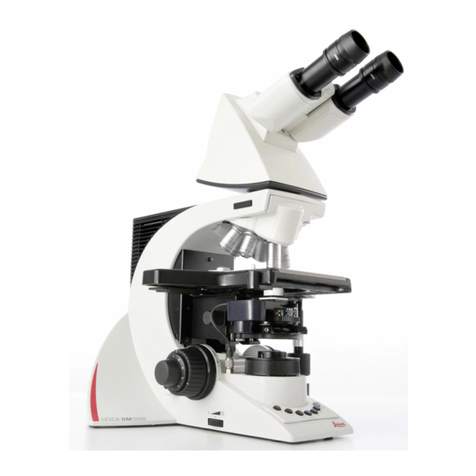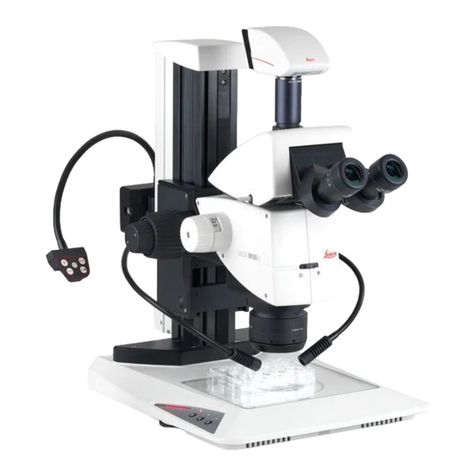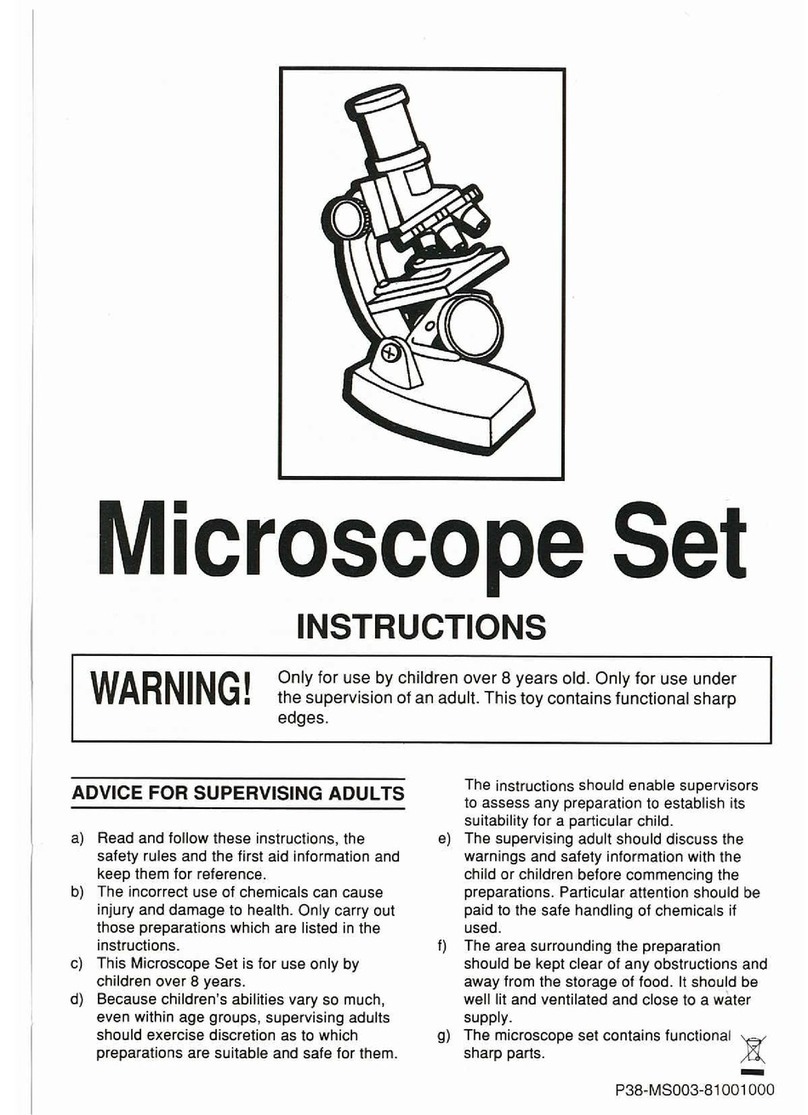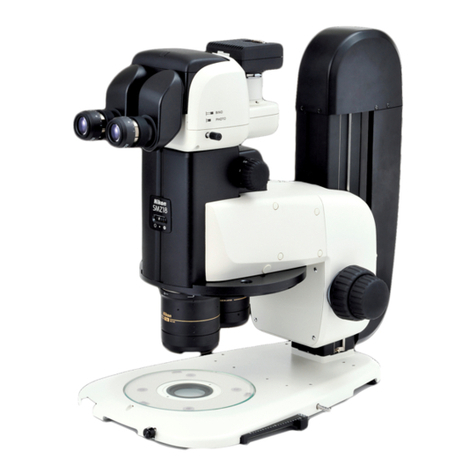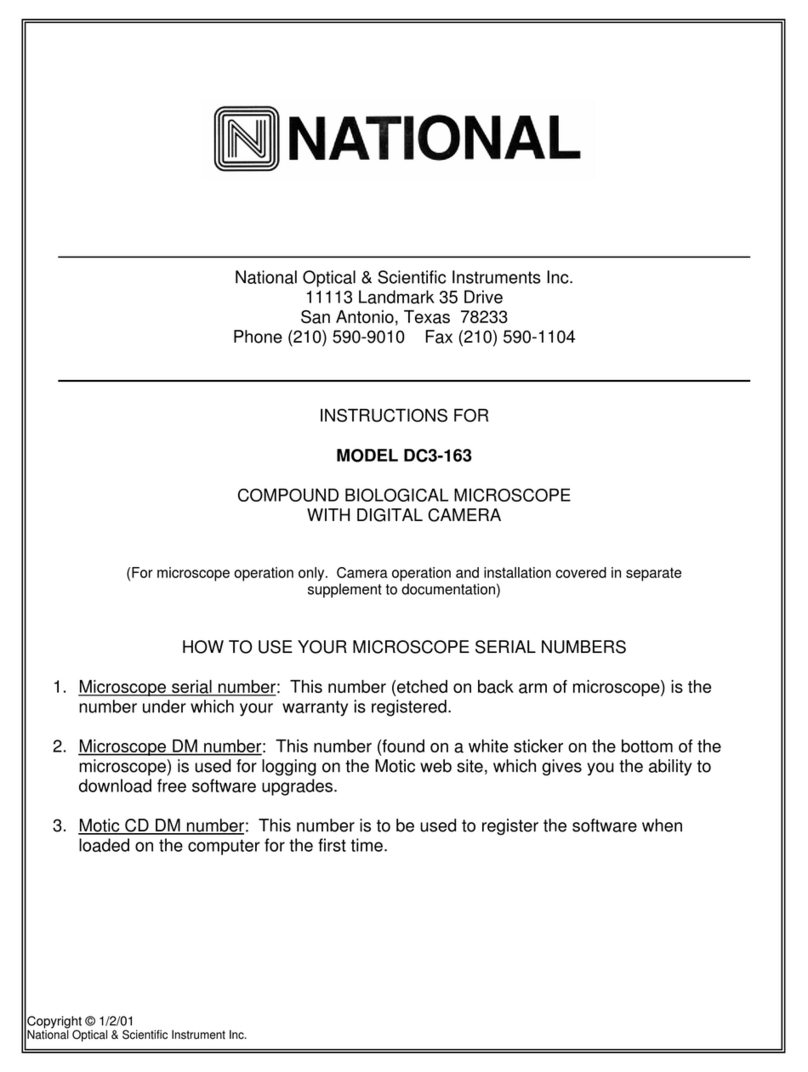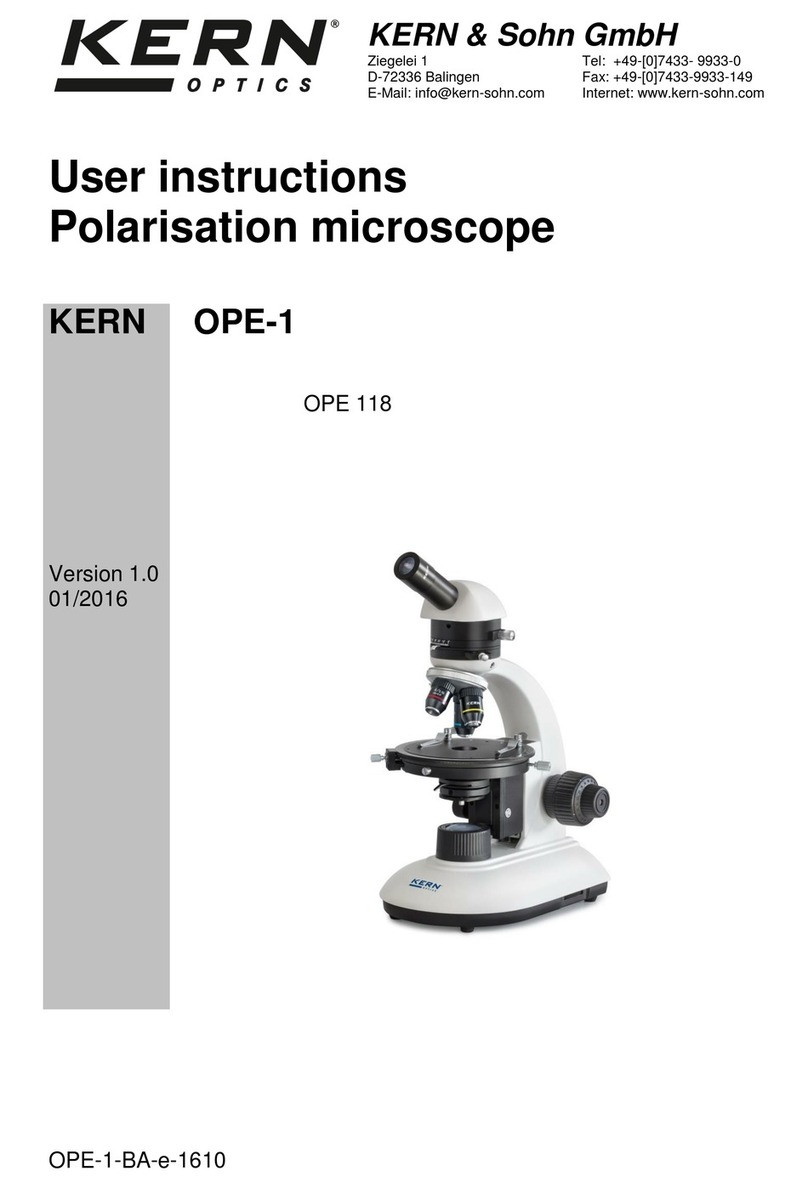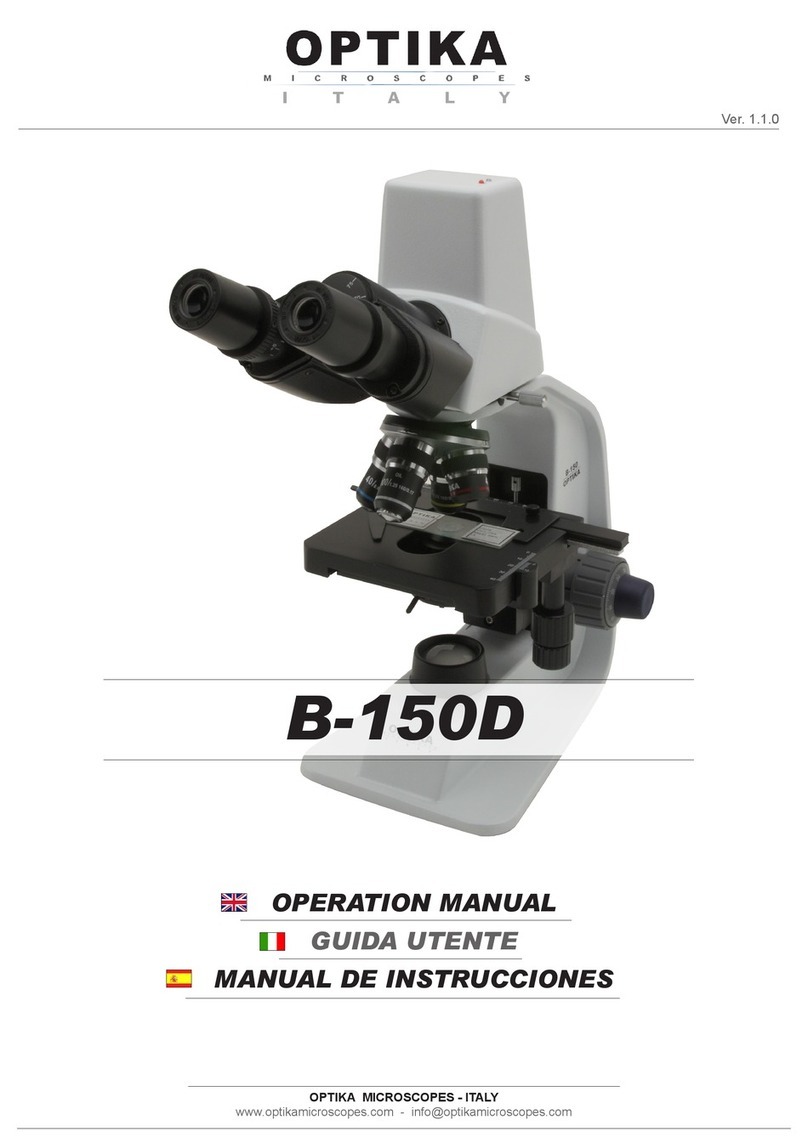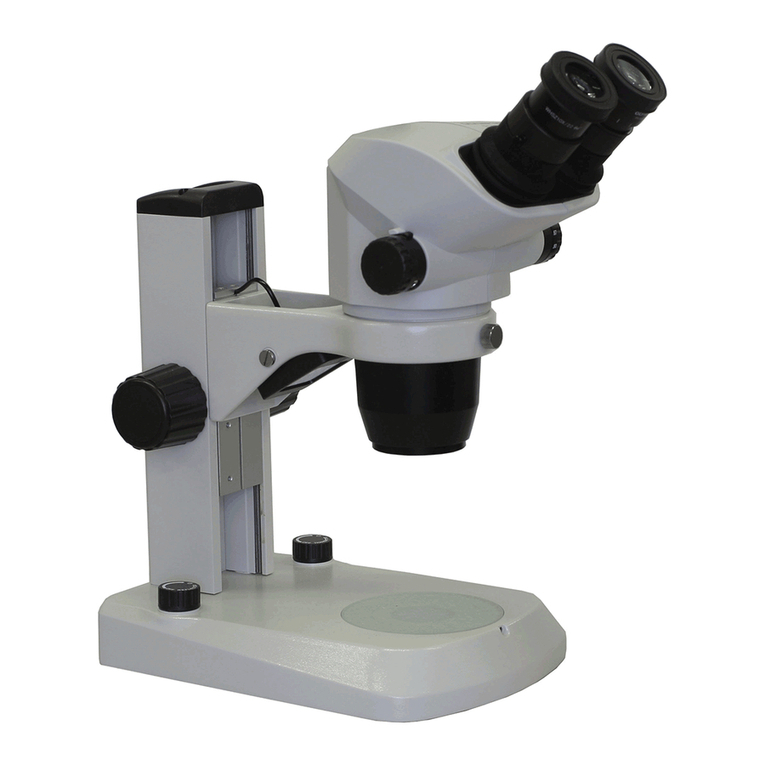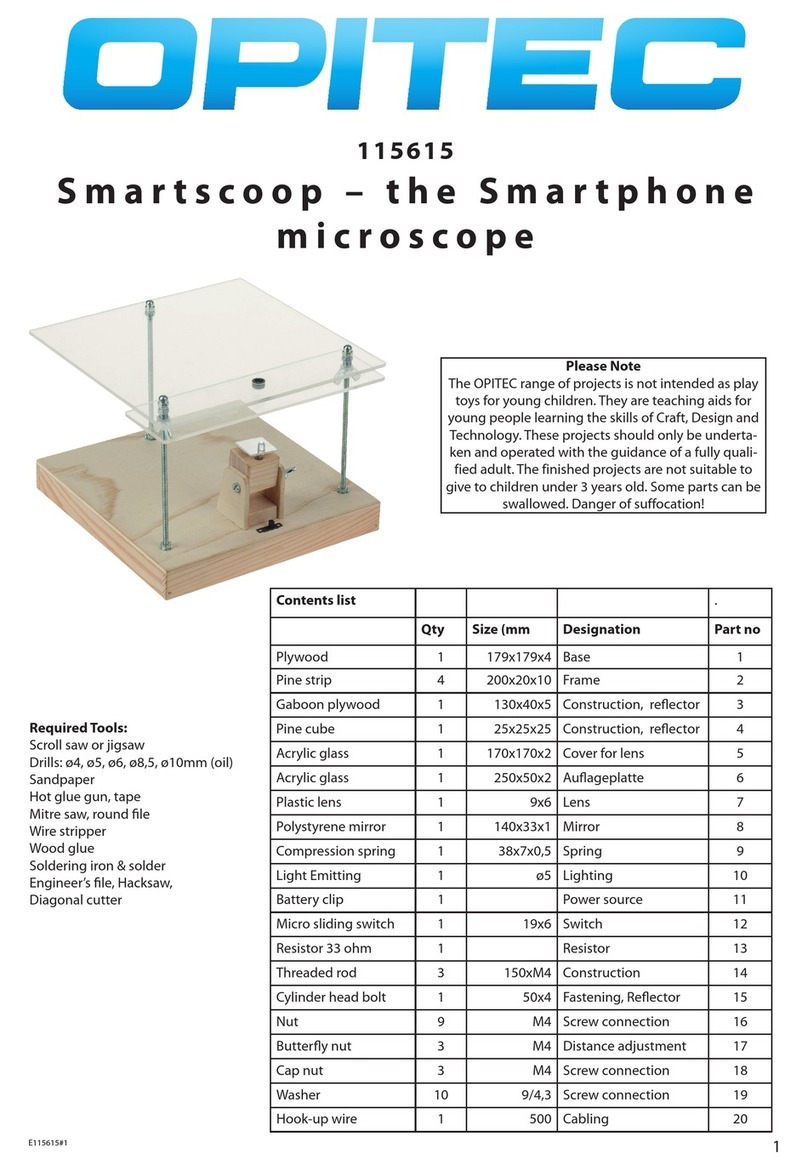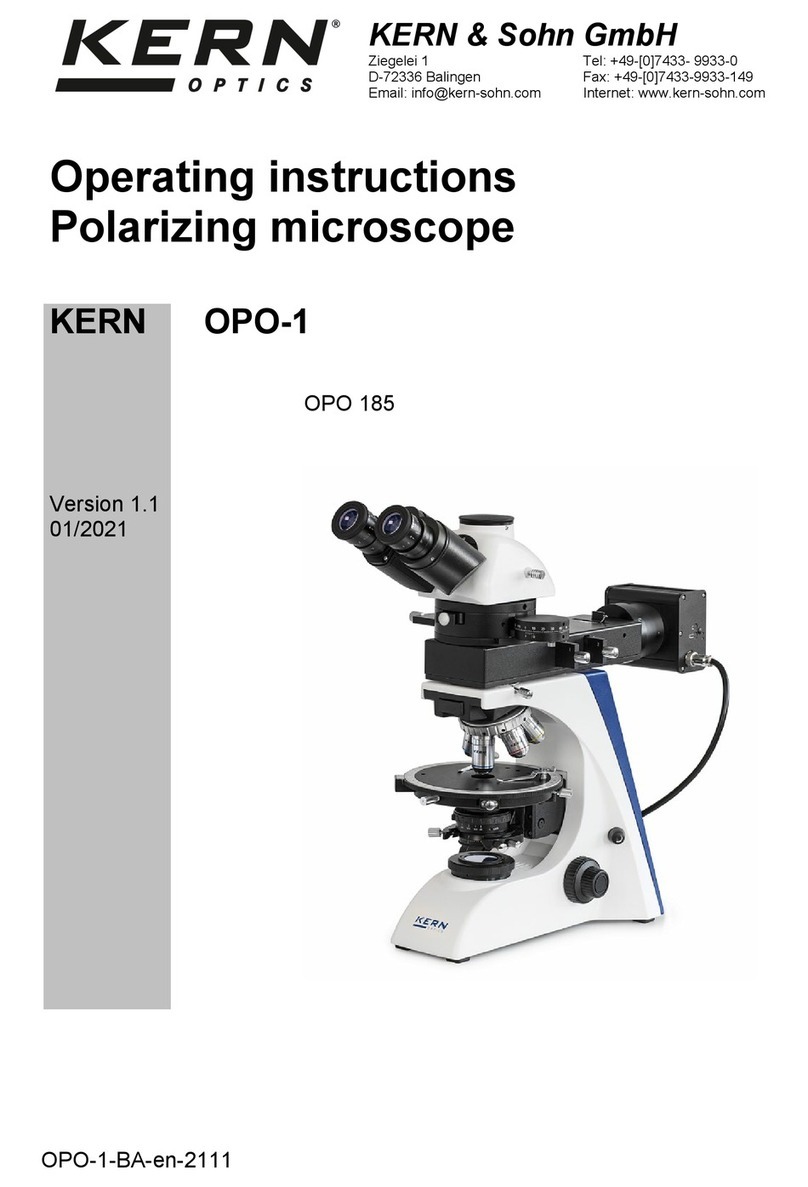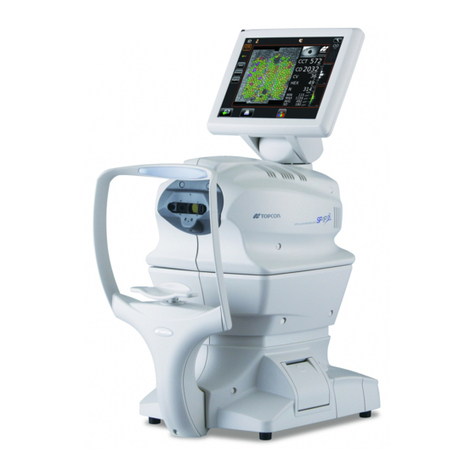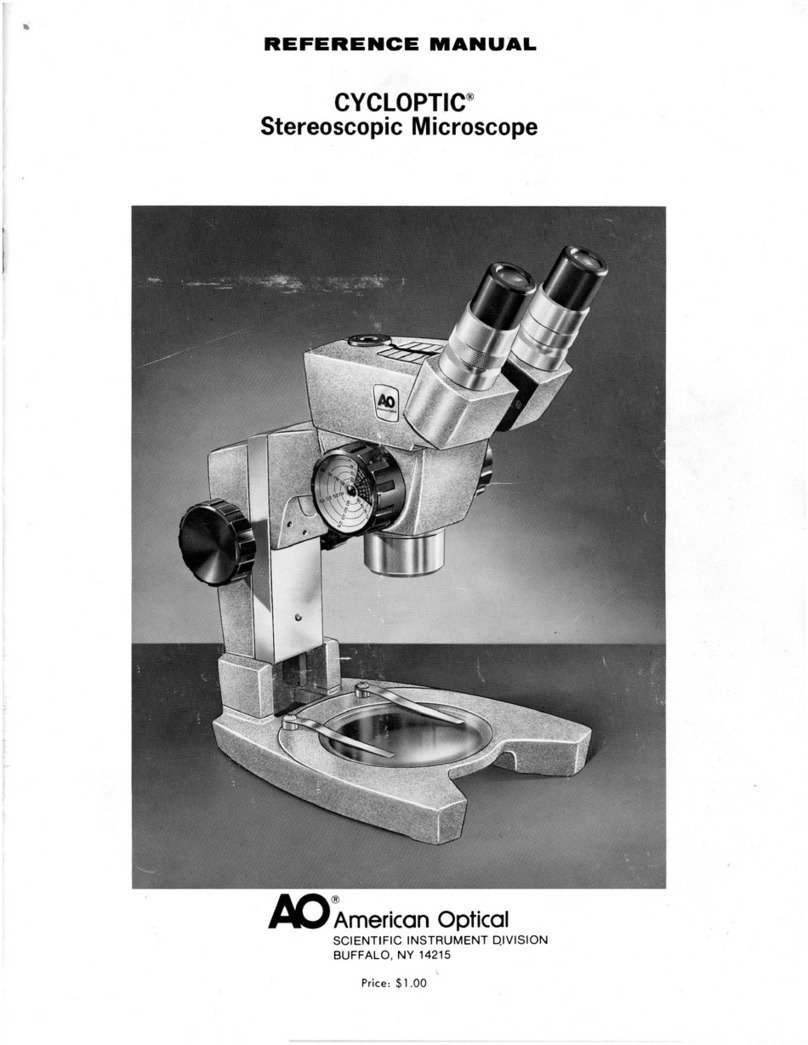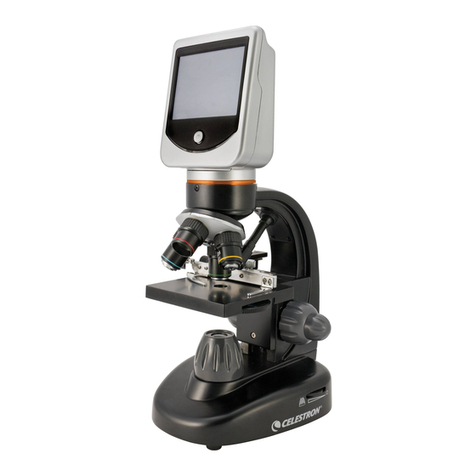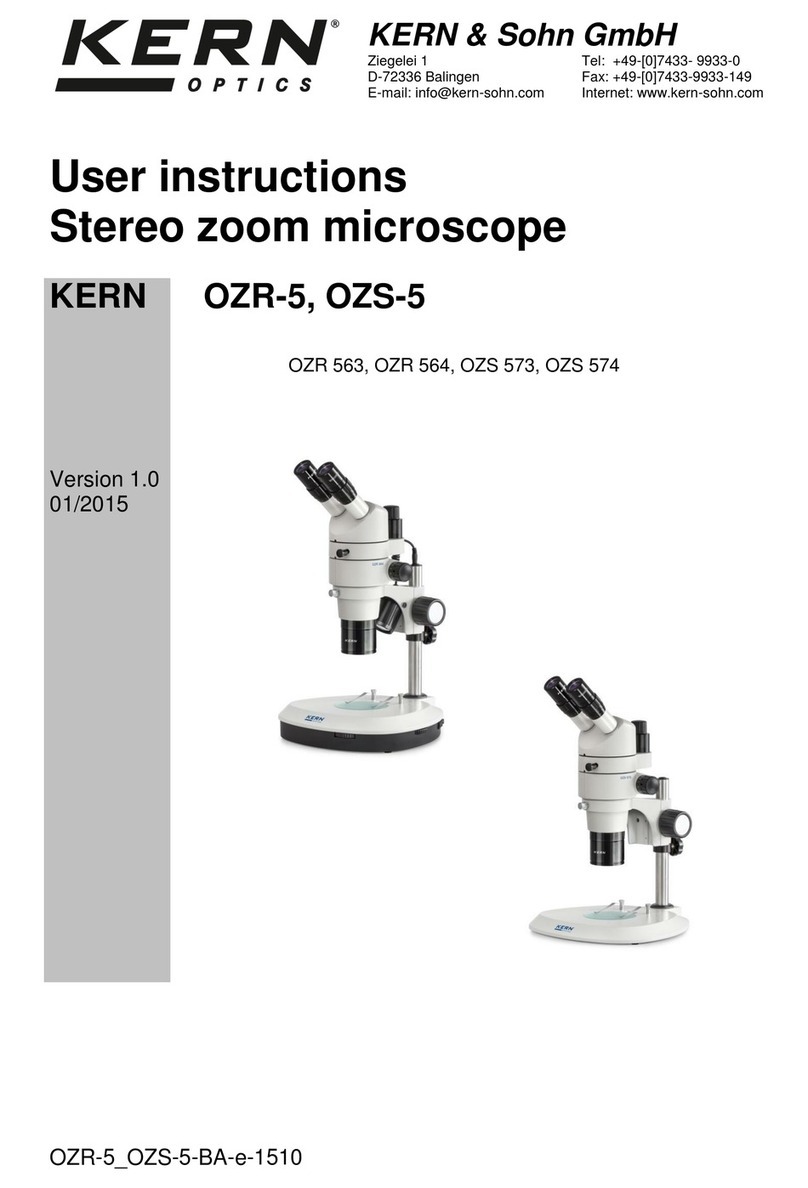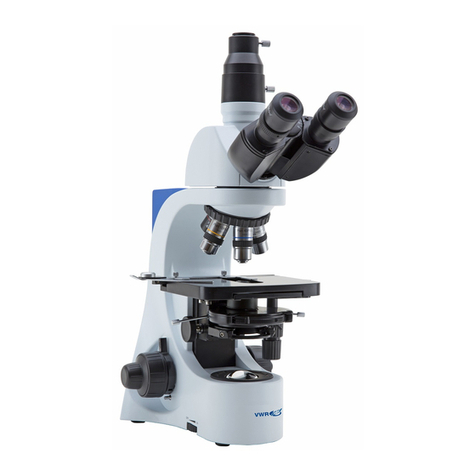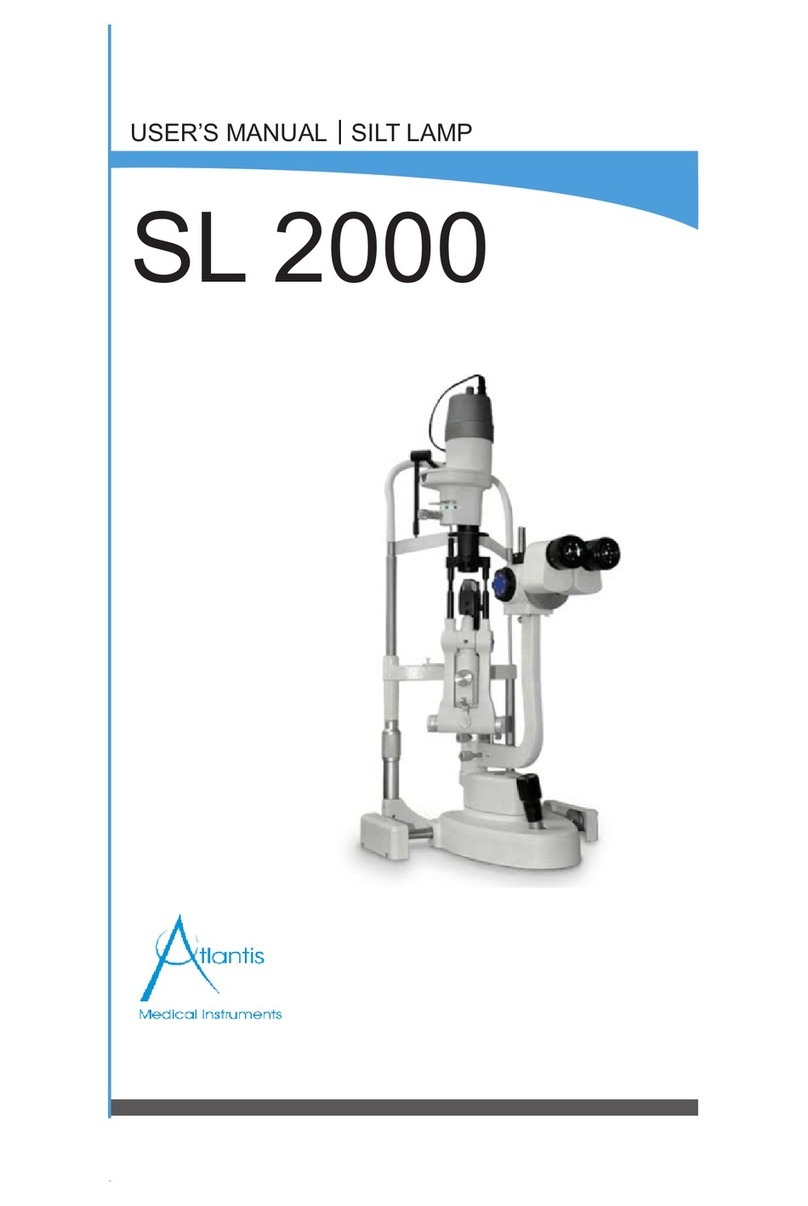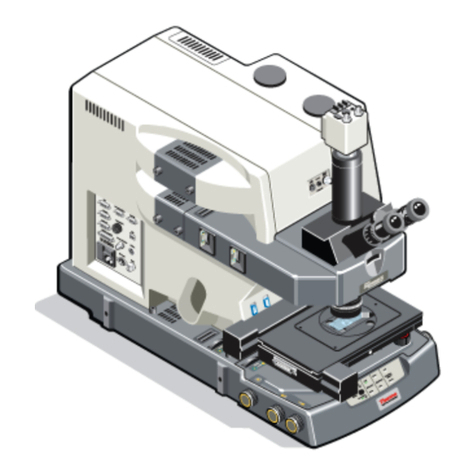
Fig
.1
DAS
Mikroskop
Leica
OM
LM
for reflected
and
tran
sm
itted* light techniques
1
Eyepiece,
with adjustab
le
eyelens
*,
anti-glare protection, 2 Interpupillary distance
setting, 3 Analyser slot (reflected light), 4 Turret
plate
(reflectors, fluorescence filter
systems),
5
Opening
(x
= recessed
gr
ip
in
lid
for fitting reflectors,
etc.),
6 Mount for
IC
prisms
(interference contrast), 7
Ob
jective nosepiece with
M25
or
M32
(BD)
thread,
8
Stage
rotation
clamp
screw, 9
Condenser
*,w
ith
centering screws
on
the
left
and
right
and
condenser fixing screw
on
the
right,
10
Polarizer* (transmitted light),
11
Fine
focus-
ing,
(two-step*
H),
12
Coarse
focusing
(
~
Fig
2),
13
Torque
adjustment coarse focus,
14
Mains
switch(
~
Fig.
2),
15
Field
diaphragm
*,
16
Brightness
adJustment,
17
Polarizer*
(reflected light),
18
Field
diaphragm centration,
19
Fi
eld
diaphragm control,
20
Aperture
di
aphragm
centrat
ion
,
21
Aperture diaphragm control,
22
Filter
magazine,
23
Clamp
screw
(stage
height),
24
Stage
height
stop,
25
Alternating switch, reflected
/t
ransmitted
light
*,
26
Filter
magazine
* (transmitted light)
*not
part
of
all
configurations
This
brief
manual
is
a
summary
of
the detailed German/English/French
OM
LM
manual
supplied with every microscope.
The
full
manual
also
describes
the
assembly
of
the
entire
microscope
and
the
automatic
adjustment
to
the
mains
voltage
in
a
range
from.
90
V-250
V/50
-
60
Hz
.
2
Make
sure
to
observe the safety information
in
the full
manual
when changing a
lamp!
Basic
brightfield
setting
Align
the
specimen.
Release
the
stage
height
stop
(1.24).
Roughly
adjust
the
vertical position
of
the microscope
stage
with
the
coarse focus
(1
.
12)
and
stage
clamp
(1.23)
.
The
position
of
the
clamp
lever
(1.23)
can
be
changed
by
pulling it vigorously outwards(=
to
the
right)
and
then
rotating
it.
Switch
on
the
light source
(1
.14)
and
switch
to
reflected light*
(1.25)
if necessary.
Engage
the
BF
(=
brightfield)
or
the
Smith
reflector
(1.4).
Turn
a
lOx
or
5x
objec-
tive
into
the
light
path,
switch
the
tube beamsplitter*
to
the
observation
posi
-
tion (if relevant).
Remove
the
analyser*
(1.3),
polarizer*
(1.17)
and
IC
prism
*
(1.6)
from
the
light
path
if present
(pull
out
part
way).
Adjust
lamp
brightness
(1.
16).
Eyeglass
wearers:
Remove
or
turn
back
the
anti-g
Ia
re
protection (1
.1
).
Narrow
the
field diaphragm
(1.19),
adjust
the
coarse focus
(1.12)
until the field
diaphragm
is
roughly
in
focus;
set
the
torque
of
the coarse focusing
(1.13)
if desired. Switch
the
fine
focusing
at
"f
ine"
or
"medium"
by
sliding
the
focus
knob
(
1.11)
to
the
left*
or
right. Sharply focus
the
specimen with
the
fine
focus.
Open
the field diaphragm
(1.19)
until
the
whole field
of
view
is
illuminated.
Set
the
eyep
ie
ce
eyelens
(1.1)
and
the
interpupillary distance
(1.2)
. Adjust
the contrast with
the
aperture diaphragm
(1.21).
The
field diaphragm
and
aperture diaphragm
can
be
centered according
to
the
instructions
in
the
full
manual
(1.18;
1.20).
Reflected
light
polarization
*
First
set
as
for brightfield
(see
above).
Use
a
BF
or
Smith
reflector.
Set
the
polarizer
(1.17):
Polarizer
POL
*:
Replug
the
round
polarizer mount
on
the
back
so
that
the
arrow H
is
in
a horizontal position. Insert
the
polarizer
(1.17)
as
far
as
the
second
clickstop. Slot
in
the analyser
(1.3)
and
rotate until
the
desired
contrast
is
set.
Polarizer
ICR
*:
Insert the polarizer
so
that the Aengraving
(lambda)
points
to
the
back.
Push
in
the
ana
ly
ser
(1
.
3)
as
far
as
the
second
clickstop.
Set
the
zero
position (= markings
co
in
cide).
Rotate
the
polarizer until isotropic
objects (mirror) appear
dark.
Polarizer
with
rotatable
A.
comprensator
(not illustrated):
Set
the
analyser
at
the
zero
position.
Rotate
the
whole-wave compensator roughly
th
the
centre
position.
Rotate
the
polarizer until
the
object
is
as
dark
or
as
richly contrasted
as
possible,
then
turn
the
whole-wave compensator until
you
achieve colour
contrast.
ICR
reflected
light
interference
contrast
*
Set
brightfield
(see
above).
Cross
the
polarizers exactly
(see
above),
use
PL
FLUOTAR*
or
PL
APO*
objectives
(use
of
N
PLAN
objectives
is
greatly
restricted). Slot
the
objective
prism
(1.6)
that corresponds
to
the
code
letter
in
the
top
line
of
the
objective engraving
(e.
g.
"D")
above
the
objective
nose-
piece
(1.6)
.Adjust
the
image
contrast with the setting screw
on
the
objective
prism
(1
.
6)
and
adjust
the
aperture diaphragm
(1.21
).
Colour
contrast: slot
in
the
polarizer with
the
A
sign
pointing
to
the
front.
Reflected
light
darkfield
*
Turn
in
a special darkfield objective ("BD",
1.7).
Turn
in
the
"BO"
reflector
(1.4),
open
the
field diaphragm
(1.19),
set
the
contrast with
the
aperture
diaphragm
(1
.
21
).
3


